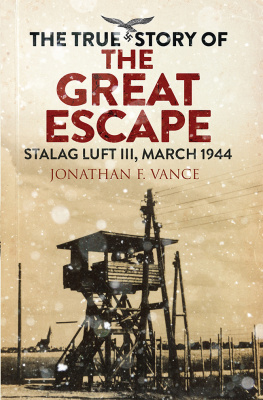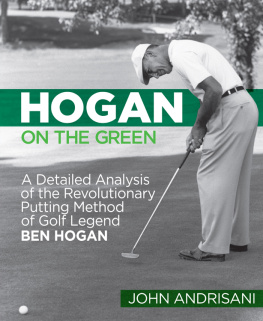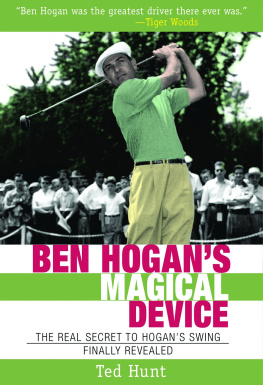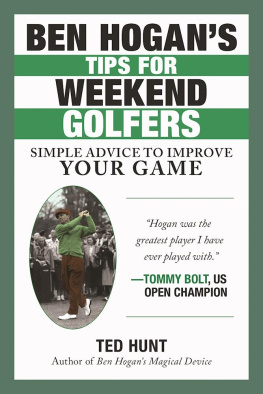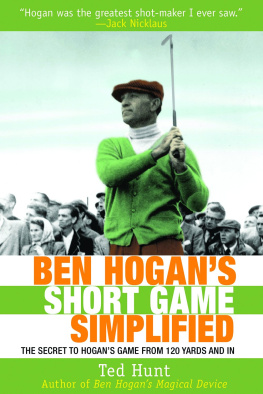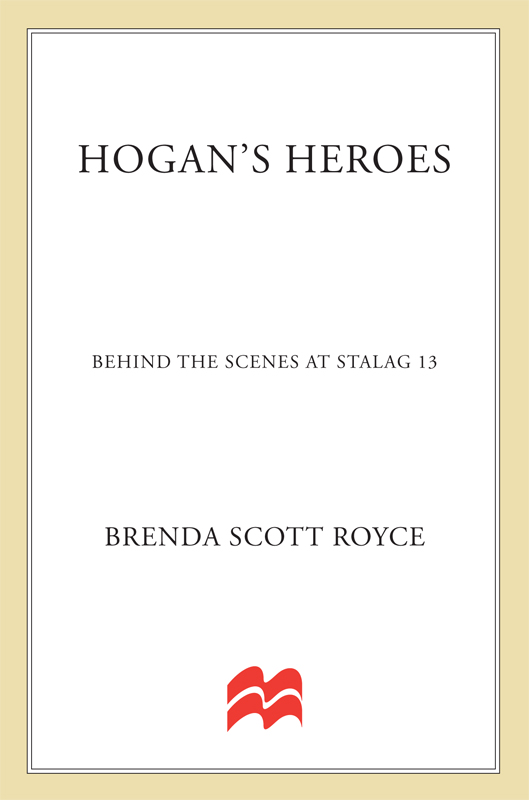
The author and publisher have provided this e-book to you for your personal use only. You may not make this e-book publicly available in any way. Copyright infringement is against the law. If you believe the copy of this e-book you are reading infringes on the authors copyright, please notify the publisher at: us.macmillanusa.com/piracy.
CONTENTS
To the unsung hero of our family, Helena Mete Code Name: Gramma
ACKNOWLEDGMENTS
The most important assistance I received on this book came from the individuals who worked on Hogans Heroes and who generously gave of their time over the years to share their memories with me. For them, my special thanks: Werner Klemperer, Robert Clary, Larry Hovis, Leon Askin, Howard Caine, Bernard Fox, Kenneth Washington, Jerry London, Laurence Marks, Howard Morris, Richard M. Powell, Gene Reynolds, Albert S. Ruddy, Kay Fein Pattison, Mary Feldman, Chris Anders, Lee Bergere, Victoria Carroll, William Christopher, Henry Corden, Eddie Firestone, Bert Freed, Harold Gould, Tom Hatten, Robert Hogan, Sandy Kenyon, Leonid Kinskey, Paul Lambert, Ruta Lee, Gavin MacLeod, Laurie Main, Frank Marth, Marlyn Mason, Dave Morick, Stewart Moss, Paul Picerni, and Vito Scotti. Thanks also to Judy Jeffers of Bing Crosby Productions and Randy Ragland of Rysher Entertainment.
The following individuals and organizations have each contributed time, information, or materials to the preparation of this book and my appreciation cannot be overstated: Kathy Bartels, Mark Batira, Howard Berlin, Roger Christman, Stephen Cox, Gary Crane, Jim Davidson, Chris Finkbeiner, Otto Franklin, Paul Grieshop Jr., Matthias Hamann, Marilyn Hering, Lanette Hohl, Kathleen Jacobs, Linda Kay, Richard Laban, Paul Lichota, Vicki Linde, Robbin Love, David Martindale, Madeline McGrail, Norman Pomeroy, John Reese, Dale Roberts, Jim and Melody Rondeau, Mark Smeby, Vince Waldron, David Wojtowicz, Stefan Worbs, Johnnie J. Young, Todd Zaganiacz, Gayla Raul of Film Favorites, Jonathan Rosenthal of the Museum of Television and Radio, Diane and Stephen Albert of the TV Collector, Bill Morgan of TV Toys, Katharine Loughney and the Library of Congress, Janet Lorenz and the Academy of Motion Picture Arts and Sciences, the Theater Collection at the New York Public Library, Robert Franklin and Rhonda Herman of McFarland and Company, and Donna Malone of Bernie Ilson Public Relations.
Thanks to everyone at Renaissance Books, particularly Joe McNeely for making this paperback edition possible, and Bill Hartley, Michael Dougherty, Kimbria Hays, Paula Leto, Kathryn Mills, and Jim Parish.
As always, my deepest appreciation goes to my family and friends for their support and encouragement.
FOREWORD
When I was asked to write the foreword for this book, I gladly accepted the opportunity to relate how important Hogans Heroes has been to my work. The six years of Hogans Heroes were some of the most enjoyable years of my career, and it was particularly exciting to work with such a group of talented and professional peers on a continuing basis, something I had not experienced before.
Hogans Heroes is now considered a classic, much like M*A*S*H or The Mary Tyler Moore Show. It is obviously a series that can be seen again and again and it seems to continually find new fans every year. I have been told that more people see the program now (because of its wide syndication) than did when it was on the CBS television network. Many stations now play it five times a week (some stations even twice a day), giving it continuing exposure. I know the show still works, because I get letters from fans all over the country telling me how much they enjoy it.
In recent years, I have been active on Broadway and in regional theaters and concert halls all over the world. Wherever I go, not a day goes by without some fans stopping me in the street or at a restaurant or an airport to express how much they still enjoy the show. I am proud to have portrayed Colonel Klink and to have been recognized by my peers with two Emmys and five consecutive nominations.
Finally, I must take the opportunity to compliment Brenda Scott Royce on this outstanding book. Her research is remarkably accurate, her style makes for easy reading, and I am sure everyone who owns this book will get as much enjoyment out of it as I did.
Werner Klemperer
INTRODUCTION
In the New York Daily Newss TV Review column on December 20, 1965, reviewer John Horn compared Hogans Heroes to Buster Keatons 1927 film The General, in an attempt to illustrate his opinion that the standards of comedy had grossly declined if Hogans was considered good comedy. He implied that the cerebral comedy of Hogans was inferior to the physical comedy of the silent era. His closing remark in the column renders his expertise questionable. He wrote, We dont think Hogans Heroes will be playing on TV, even as a curio, a generation from now.
More than thirty years after Mr. Horns column appeared in print, Hogans Heroes is indeed airing, in hundreds of markets worldwide. Its popularity in syndication has given rise to generations of younger fans.
When the series premiered in 1965, critics reactions ran from one extreme to the other. Variety gave the pilot episode an excellent review, calling it genuinely creative farce comedy, well conceived, written, directed and played. However, much negative press was generated, mainly from those who mistakenly believed the comedy was set in a concentration camp.
When the American public was first exposed to the premise of Hogans Heroes, many were outraged. A prisoner-of-war camp in World War II Germany was an inauspicious choice of settings for a TV sitcom. War is not funny, and yet a number of successful film and television comedies set in wartime had already been produced. Jack Bennys classic black comedy To Be or Not to Be parodied the Nazi regime as early as 1942. A POW camp was untried territory in television situation comedy, and it seemed inappropriate to laugh at such a harsh reality as prisoners of war. Therefore Hogans Heroes incited more than its fair share of criticism.
To further aggravate the situation, many people confused prisoner-of-war camps with concentration camps, where millions of inmates were starved, treated inhumanely, and murdered. In a TV Guide interview, John Banner explained: People get upset when they think we are making fun of a concentration camp. You cant make fun of a concentration camp. No one would know that better than cast mate Robert Clary. In 1942, Clary was deported from France and taken to Germany, where he suffered three years of savage treatment in concentration camps. At the end of the war, Clary learned that of the thirteen members of his family who were sent to concentration camps, he alone survived.
POWs, on the other hand, are protected by the Geneva Prisoner of War Convention regulations for the ethical treatment of prisoners. Though confinement in a prisoner-of-war camp does not in reality make for fun and frolics, Hogans Heroes was not based in reality. It was a parody, an escapist form of comedy. The fictional Stalag 13 was never meant to be representative of a real POW camp.
The comedy of Hogans Heroes rose not out of the setting, but out of the charactersa bunch of guys outwitting authority. It was a familiar formula in a setting that was unfamiliar to most TV viewers and therefore caused a great deal of uneasiness. The controversy was heightened by a radio promo produced by humorist Stan Freberg, which had Bob Crane chirping, If you liked World War II, youll love Hogans Heroes. The reaction, of course, was that people did not like the war, and that the commercial was in poor taste. The spot was yanked from the airwaves. Crane later admitted that he had reservations about doing the ad but did not heed his better judgment. Barring that blunder, everyone involved with Hogans did all they could to minimize the controversy by concentrating instead on producing a unique, top-quality comedy. If A. C. Nielsen is the judge, they succeeded. Hogans Heroes was the highest rated new show of the 196566 season, ranking #9 among all network shows. It was an unqualified hit.


